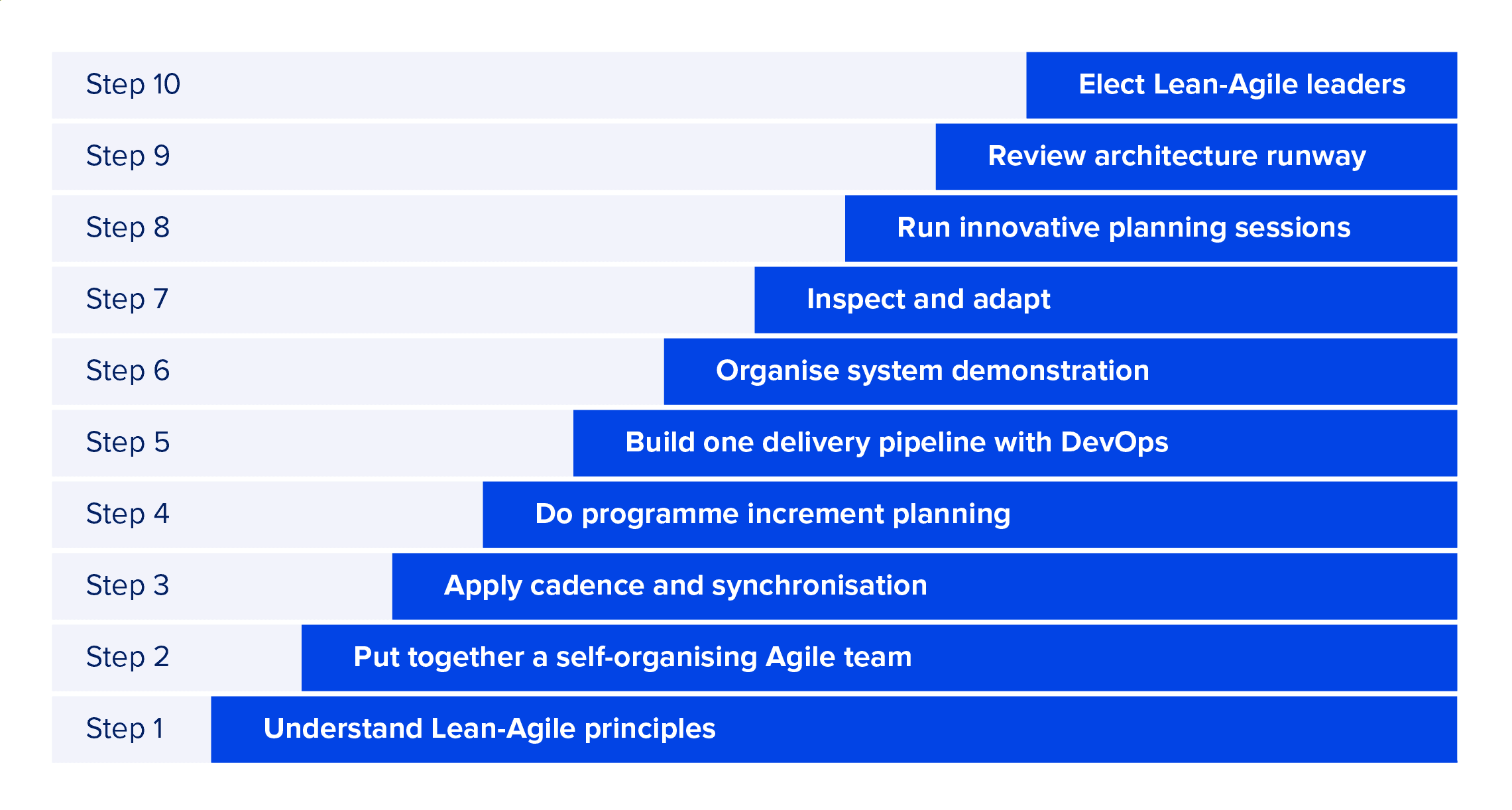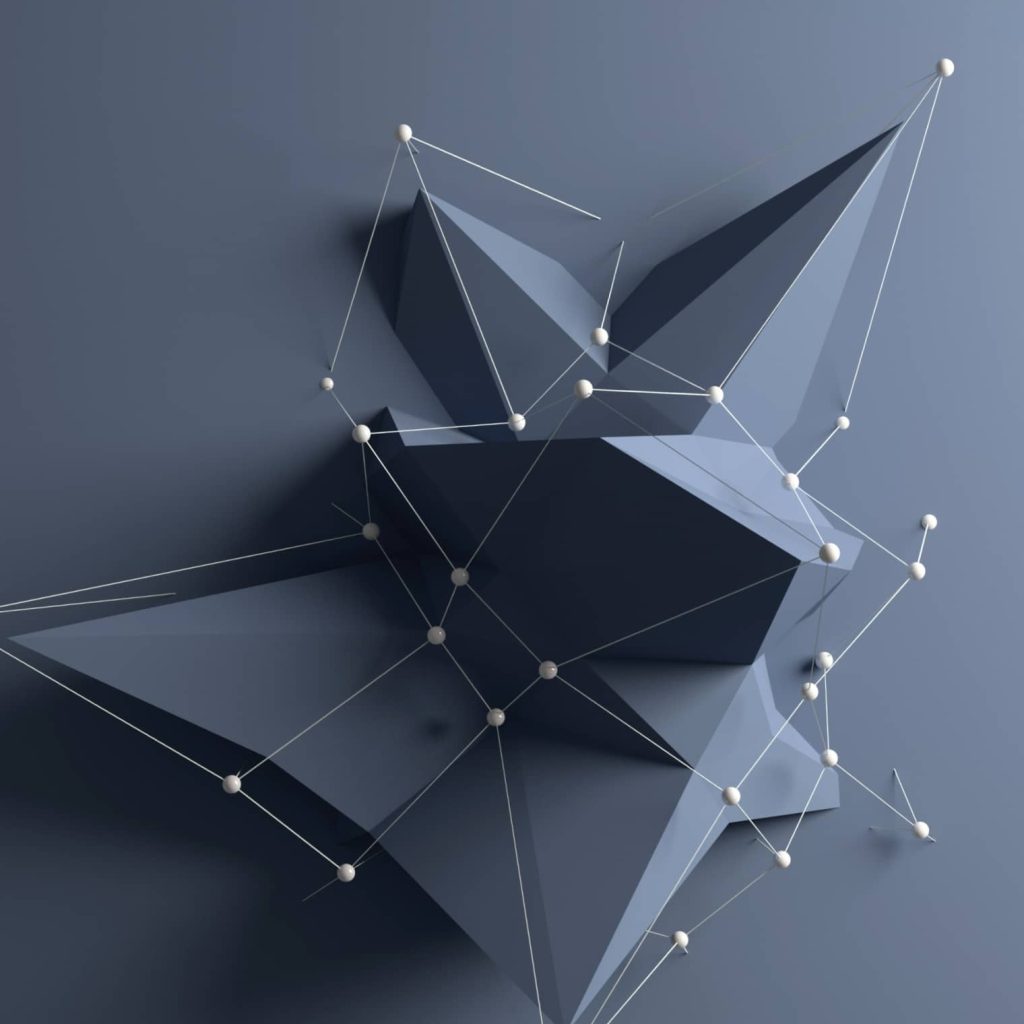Many enterprises are stuck in an operational rut. The size of a company can be problematic but so can its traditional business model, which is used for scale and standardisation, rather than agility and innovation. This hinders an organisation's architecture and the way work is managed and measured. Why migrating to the agile enterprise architecture is an answer?
The Agile organisation leaves siloed structure and top-down management behind, transforming into an enterprise that’s capable of continuous change. It keeps pace with a continually evolving market and is responsive, adaptive and innovative.
According to a KPMG report, to stay competitive in shifting markets, around 70% of enterprises have embraced Agile transformation—the majority citing SAFe as their ultimate framework for scaling. Agile methods promise flexibility and, of course, business agility. However, 68% of respondents state that faster product delivery is the key driver for moving towards an Agile model. Customer satisfaction is the fourth biggest motivator, coming in at 42%.

Source: McKinsey & Company
What is a Scaled Agile Framework?
The Scaled Agile Framework, or SAFe, is the world’s leading framework for implementing Agile practices across an enterprise. It's designed to build the ideal trust relationship between teams and management, to help coordinate goals, and to put more emphasis on cooperation and transparency within a company.
SAFe is an approach that scales Scrum to the enterprise level. As a large enterprise framework, SAFe can use both Scrum and Kanban practices, depending on the context. Scrum allows multiple people to work on a complex project by dividing it into bite-sized tasks that can be completed in a shorter period—called sprints or iterations. With every sprint, the team gets closer to the finished product and can incorporate customer feedback before the next sprint.
Kanban, on the other hand, is a framework designed for visualising the working process. The team uses the Kanban board, which allows members to view real-time progress and continuously improve workflow. Thus, SAFe gives you the freedom to scale and meet the needs of a truly agile business. And it leads to the creation of high-quality products in the shortest possible time. Less risk, more SAFety.
Do you need Agile enterprise architecture?
It's important to understand that SAFe is integral; it is a whole chain of actions that allows you to grow your company and make a profit.
Think about the performance and structure of your enterprise. Is everything well-thought-out? Why might you need this SAFety? Generally speaking, there are two types of organisation that benefit from transformation:
- Large organisations with pre-defined processes. Changes to the existing process are necessary to meet the rapidly evolving demands of a competitive market. As such, automating supply chain then becomes crucial to a company’s reaction to adverse market conditions.
- Fast-growing SMEs that will become large enterprises. These companies have no prior knowledge or leadership for expanding their activities worldwide. They're also unsure of the practical implications of their integrated management and marketing strategies.
So, before converting to SAFe, you should think about if and why you need it. What would you change within your business and how can SAFe help you achieve that?
The foundation for successful enterprise Agile transformation
Before migrating to Agile enterprise architecture, clarify your goals and plan your strategy for achieving them. Each action should be clear and defined. This will help you build a solid vision, anchored in the following Lean-Agile principles:
- House of Lean – the visual representation of lean methods and the sequence in which they should be implemented. House of Lean defines what is critical for building and sustaining a specific company. This means that different businesses will have a different House of Lean pipeline.
- Agile Manifesto – a set of values and principles which provide a blueprint for effective product management and software development.
Thus, to successfully implement an Agile transformation, you need to have Lean-Agile specialists who understand Lean and Agile methodologies. This will, ultimately, lead to SAFety.
10 steps for building Agile enterprise architecture
Once you have defined why you need SAFety, it's crucial to apply the changes in a way which doesn’t compromise your company. Here’s how to do it:

1. Understand Lean-Agile principles
Implementing SAFe requires Lean-Agile thinking that complies with Lean-Agile principles. According to Scaled Agile, Inc., the principles are:
- Take an economic view
- Apply systems thinking
- Assume variability; preserve options
- Build incrementally with fast integrated learning cycles
- Base milestones on an objective evaluation of working systems
- Visualise and limit WIP, reduce batch sizes, and manage queue lengths
- Apply cadence, synchronise with cross-domain planning
- Unlock the intrinsic motivation of knowledge workers
- Decentralise decision-making
- Organise around value
Understanding these principles will give you a deep insight into the process by incorporating innovative thinking, tools, and techniques.
2. Put together a self-organising Agile team
Self-organising, self-managing and cross-functional Agile teams manage their tasks independently. The onus is on teams to handle workflow and decision-making, rather than relying on a higher authority.
Self-organising teams are part of the Agile Release Train (ART), which drip-feeds value, gradually.
3. Apply cadence and synchronisation
Cadence and synchronisation help manage uncertainty, ensuring that teams are committed to the established release delivery process and that their work paths interact effectively with each other.
Cadence determines routine and makes everything as predictable as possible. It helps to schedule things such as programme increment planning and system demonstration in advance. Meanwhile, synchronisation allows all scheduled events to be managed simultaneously.
4. Do proper programme increment planning
Thorough planning is at the heart of SAFe. The planning phase is when all ART teams get together and estimate the tasks that can be completed in any given iteration, which usually lasts from 8 to 12 weeks. Each team defines the objectives for a sprint and identifies any dependencies between teams, to predict potential delivery risks.
5. Build one delivery pipeline with DevOps
To enable a continuous delivery process, DevOps and automation are implemented by the System Team. The gap between development and operations narrows over time. DevOps ensures that developers and operations are on the same page when it comes to providing value for the customer. Efficient and continuous releases ensure that value is delivered on time, with minimal errors for the end-user.
6. Organise a system demonstration
A system demo happens at the end of each programme increment, where the team presents the product that was produced. It's a key event in the ART timeline, demonstrating the progress made towards the agreed goals. ART teams can expect to receive rapid feedback during this phase, which is crucial for meeting end-user expectations.
7. Inspect and adapt
The “Inspection and Adaptation” session shows how the solutions have advanced. It's conducted at the end of each programme increment, thus systematically removing obstacles and agreeing on solutions via a brainstorming session. At the end of inspection and adaptation, elements of improvement lag are identified.
8. Run innovative planning sessions
Innovative planning sessions take place in the final sprint of each programme increment. The aim of these sessions is to discuss the goals that need to be fulfilled.
This is a perfect opportunity for brainstorming and developing useful ideas that can be implemented in the next programme increment.
9. Review your architecture runway
The architectural runway outlines a general technical plan for a software product. It can use existing components and ensures that the project meets new performance requirements. This is done to reduce alterations and achieve the project’s goals without unnecessary redesigning.
10. Elect Lean-Agile leaders
Lean-Agile leaders will manage SAFe and take responsibility for overseeing your enterprise Agile transformation. These leaders should adopt highly flexible working methods. They should adhere to the Lean and Agile methodologies and coach their teams in the principles.
Conclusion
SAFe is a well-documented enterprise-level framework that offers agility—based on the fundamentals of Agile and Lean—at every level of an organisation. Successfully scaling Agile isn’t easy, but playing it SAFe benefits all companies, regardless of sector or service.
Transforming to an Agile framework is more than just adopting a set of principles. It's an enterprise-wide journey towards changing ways of thinking and working.
Related Insights

















